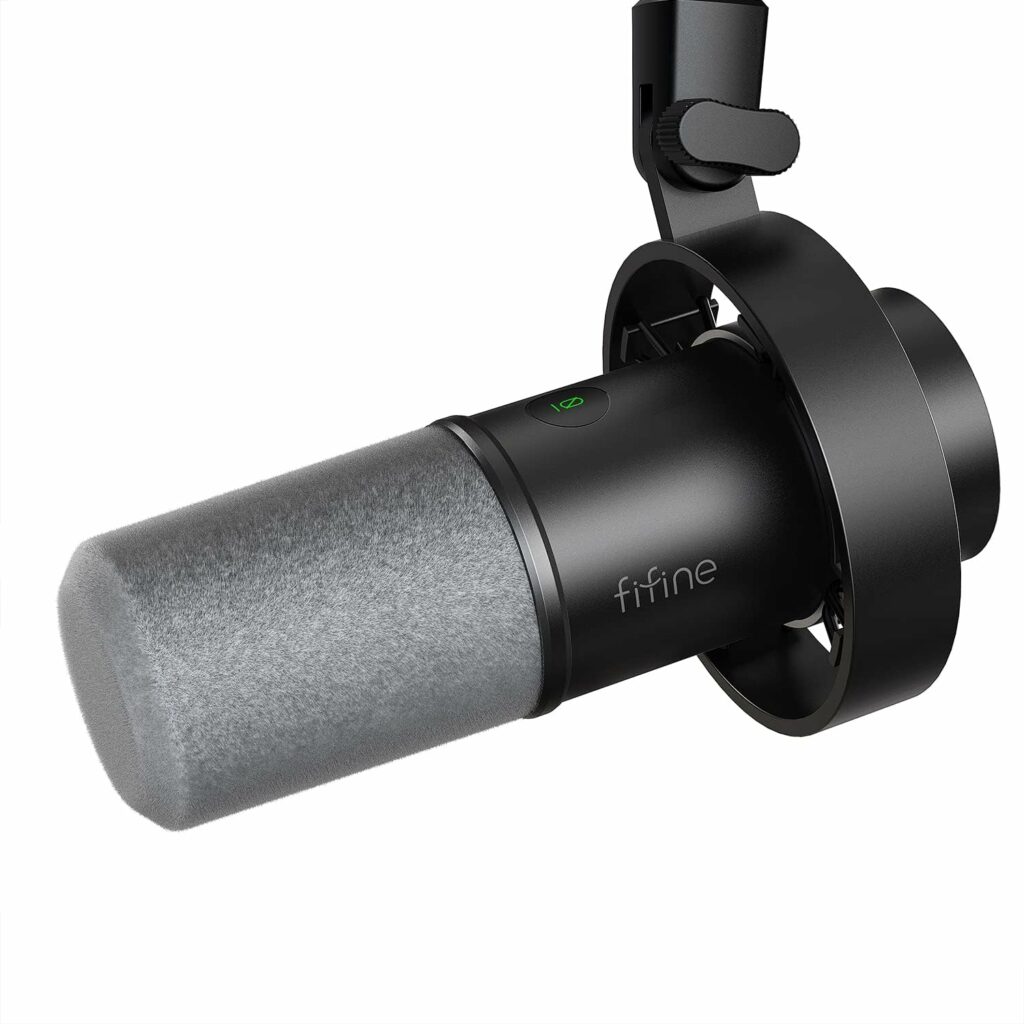Last Updated on December 4, 2023
After extensive use of the Fifine K688 microphone, I wanted to share a full review of the mic on how well it performs and how easy it is to use as a daily mic.
The K688 is positioned as a high-end choice from Fifine while staying at a highly competitive price point, staying under the $75 price point compared to the $90+ in the same category.
I was using the Fifine AM8 microphone for a while before switching over to this mic, and there are some big differences not just in overall recording quality but also in what all the mic is able to pick up from a distance and how easy it is to use, especially using this with a boom arm.
So, this review is going to focus on my experience of what it’s like making the jump from a nice budget mic over to something higher-end and using a boom arm.
With that, let’s get to the review.
Product: Fifine K688 Microphone
Recommended Price: Under $75
Cheapest Place To Buy: Amazon.com
Warranty: 2-Year warranty with product registration (More Info)
My Rating: See below!
Pros
- Super high-end studio quality
- Simple controls, easy to use
- Fully made out of metal
Cons
- Does not come with an XLR cable
- With XLR, still have to have USB-C plugged in with XLR in order to use mute/gain controls
- Does not come with any stand
K688 Mic Performance
Starting with the overall performance and how the mic sounds, I figured I could record an example using the mic and share how it sounds from different distances.
Give this example a listen, I recorded the audio from different distances and did some tap tests to share how well the shock mount works!
K688 Sound Test:
That was recorded at about a 60° angle while having it side-mounted with the boom arm. That’s the best angle I could get with how I needed to attach the boom arm to the desk.
It has a great level of sound quality and it’s able to pick up audio from long distances, something I’ve come to appreciate when I need to get up and I’m away from the mic – folks can still hear me and I don’t have to switch to my lower-quality, robotic headset mic.
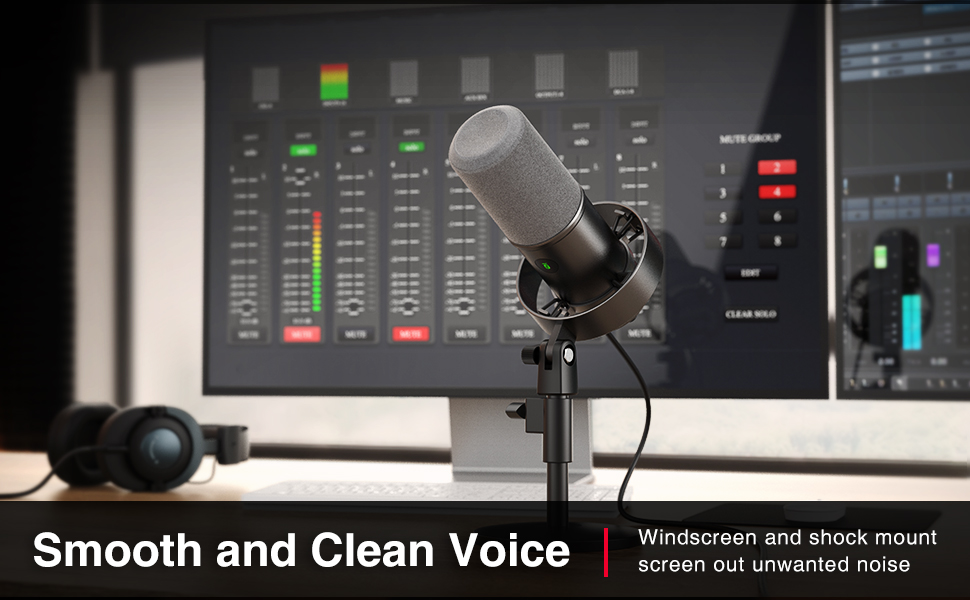
I used Windows Voice Recorder for that example and didn’t change any specific audio settings within Windows. It was easy to find the “sweet spot” for the mic gain by doing quick recording comparisons and adjusting it to a level that I thought was best, which was a little over the halfway point on the mic gain knob at the back of the mic.
K688 Specs
Before getting into the specs of the mic, I’ve got to say that I’m no audiophile. When it comes to the technicals behind a microphone, I don’t have a complete understanding of what it all means…
With that said, I’ve done some research and when comparing this mic to other similar dynamic mics, the K688 is right on par with a lot of the other high-end mics on the market.
Fifine K688 Tech Specs:
| Type: | Dynamic |
| Polar Pattern: | Cardioid |
| Compatibility: | PC, Mac, PS4, PS5 |
| Bit Depth/Sample Rate: | 16-bit/44.1k-48k Hz |
| Frequency Response: | 70-15k Hz |
| Signal-to-Noise Ratio: | >75 dB |
| Max Sound Pressure Level: | 130 dB |
| Sensitivity: | -58±3dB |
| Adjustable Gain Range: | 0 to +12 dB |
I’ve recorded and experienced different levels of microphones from built-in mics with headsets to higher-end mics such as this K688, but I still wanted to share the specs for those of you who want to compare them to other mics on the market or are interested in the technical specifics.
A lot of these specs aren’t too important to me without using XLR and messing around with/testing different equalizer adjustments and whatnot – the audio recording from earlier is from using the USB connection at default settings, with slight adjustments to mic gain.
In a nutshell, when it comes to these specs, the K688 is great for voice recording whether that’s for podcasting or if you’re like me, it’s a great upgrade when you want to have a solid upgrade in recording quality without breaking the bank.
There are plenty of microphones with similar specs and audio quality for anywhere from $30-$100+ more – the K688 doesn’t have any “fancier” features that you’ll find with more expensive mics but for my use case, that isn’t a deal breaker.
VOIP Performance
I’m constantly in Discord with friends while gaming or hanging out in different channels – it’s my go-to VOIP software and I wanted to share my experience with this mic in VOIP such as Discord.
Discord’s automated input sensitivity does a great job in general, and with the K688, it worked flawlessly. I have set my input volume in Discord’s input device settings to max, and set mic gain to a little over halfway and that’s what has worked best for me.
At these settings and with the automatic input sensitivity, folks in different Discord channels don’t have to mess around with my volume much if at all – not too quiet, not too loud.
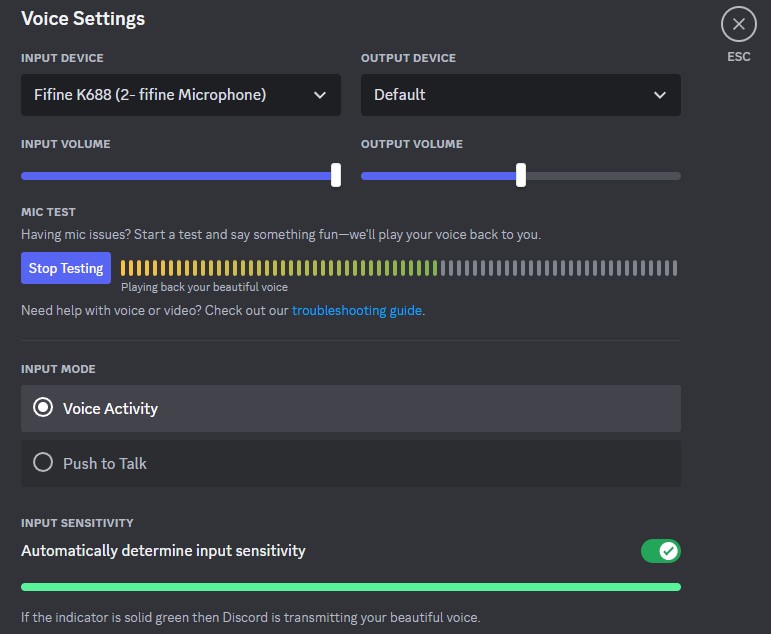
Overall, when using this mic with Discord, it’s simple to set up and is a nice quality upgrade that folks notice within VOIP.
K688 Main Features
I’m in Discord constantly chatting with friends and, for the longest time, stuck with a mic that was built-in with my wireless headset and although that worked for general use, I wanted to have a high-quality sound when communicating in both Discord and in-game communication.
It’s one thing to have a great-sounding mic, which this mic does a terrific job of, but what about daily use?

When moving forward to a high-quality mic, it’s not just about the audio but also whether or not it’s easy to utilize day-to-day and the longevity of the mic’s build.
That’s what this review will be focused on within these next few sections – we’ll go over the overall build quality of the mic itself and how well it functions.
Build Quality Features
Right off the bat when it comes to the build quality of the K688, it feels high-end. The mic itself isn’t made out of cheap plastic, the mic and shock mount is made out of metal. The shock mount does a great job of stabilizing the microphone and avoiding vibrations and unwanted sound when using the mic.
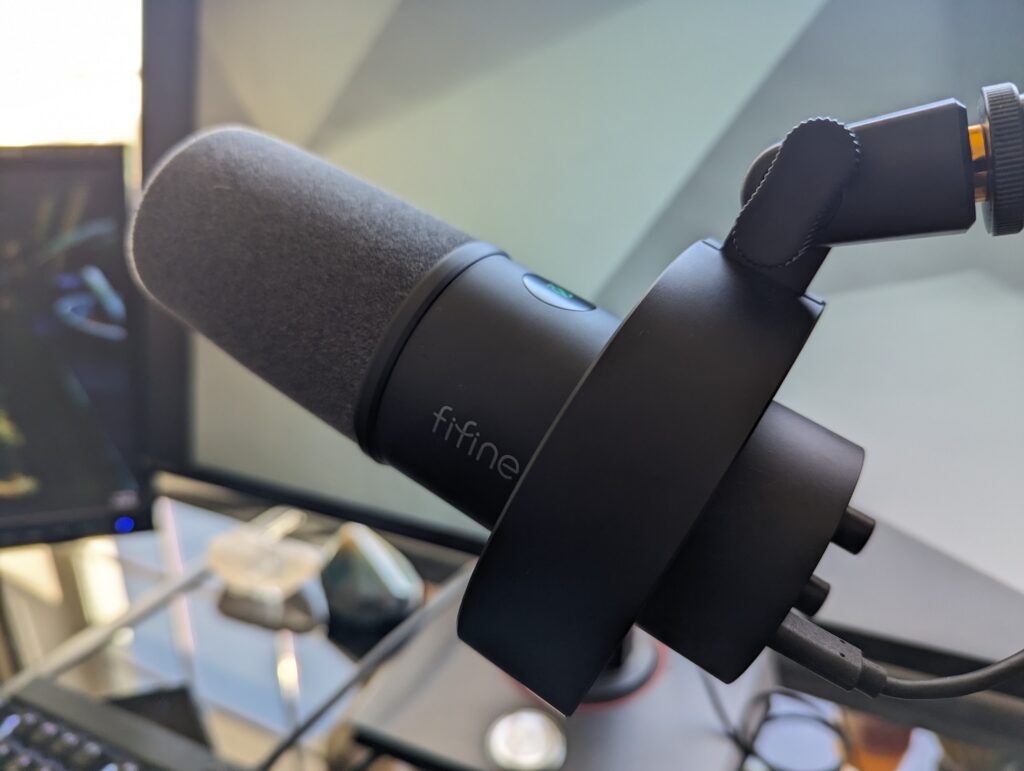
All together, it weighs right at or under a pound so it will be able to be used with basically any boom arm. I’m currently using it with the Fifine BM88 boom arm and to no surprise, it’s a perfect fit for the mic.
It’s easy to adjust the mic angle from the shock mount – a quick tighten/loosen twist and it’s able to be adjusted to the angle you prefer. The thread is 5/8″ so you’ll be able to use it with pretty much any boom arm you’d like to use.
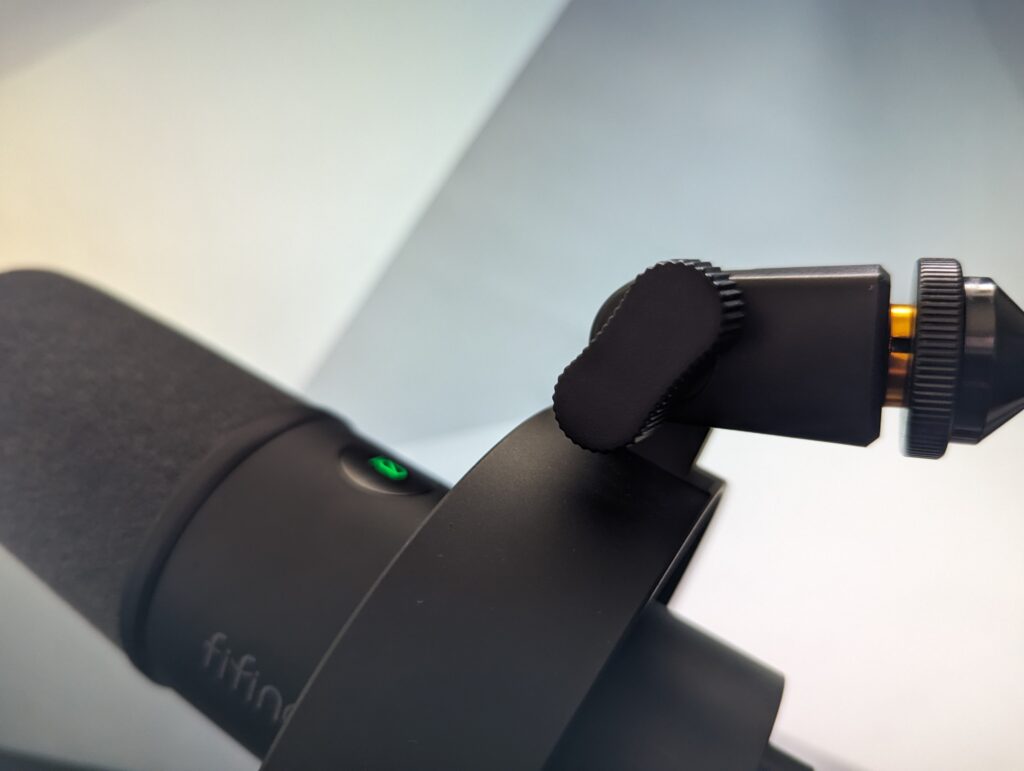
The headphone volume and mic gain adjustment knobs are tight, they’re simple to adjust and aren’t wobbly. It’s a straightforward design, and it’s easy to find the “sweet spot” for the microphone’s gain. Tap-to-mute is easy to reach and is immediately responsive, simple, and convenient.
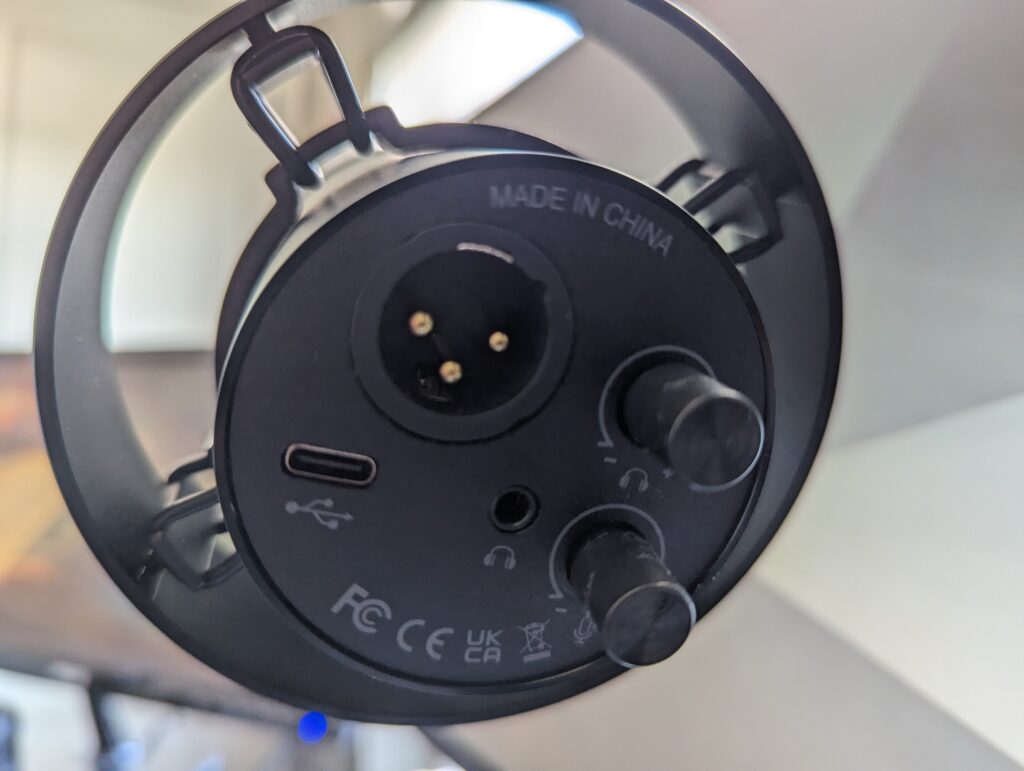
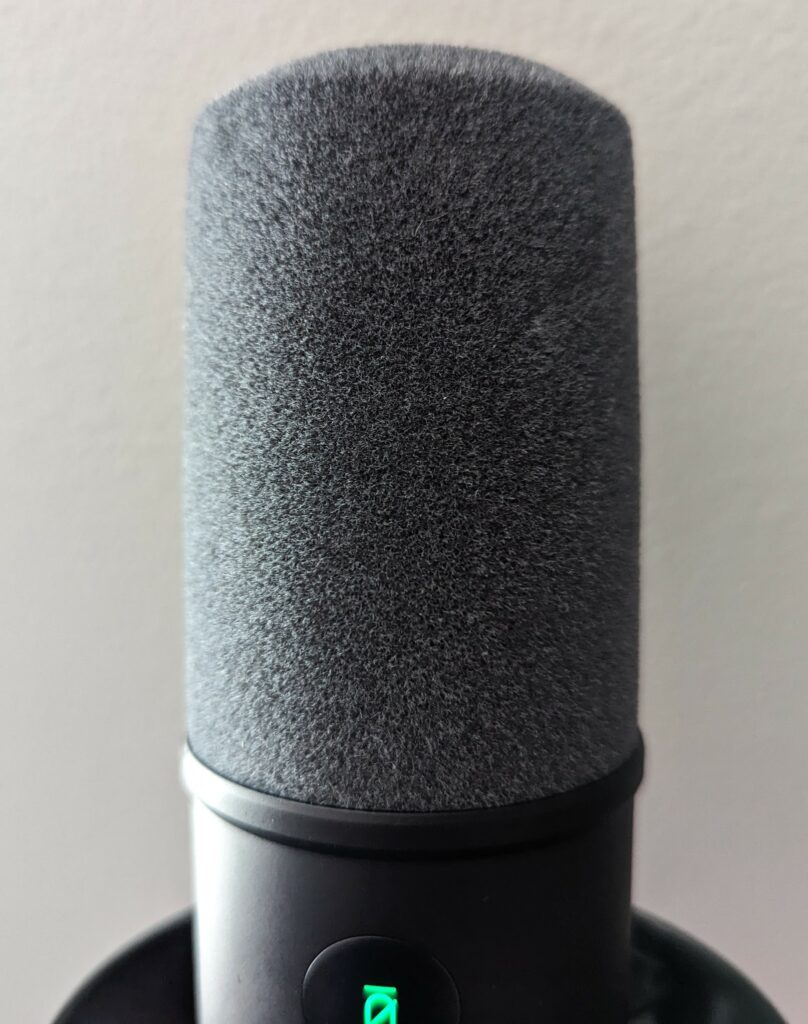
The grey pop filter is very soft, it’s easy to remove and it covers the metal cage over the diaphragm and voice coil of the mic.
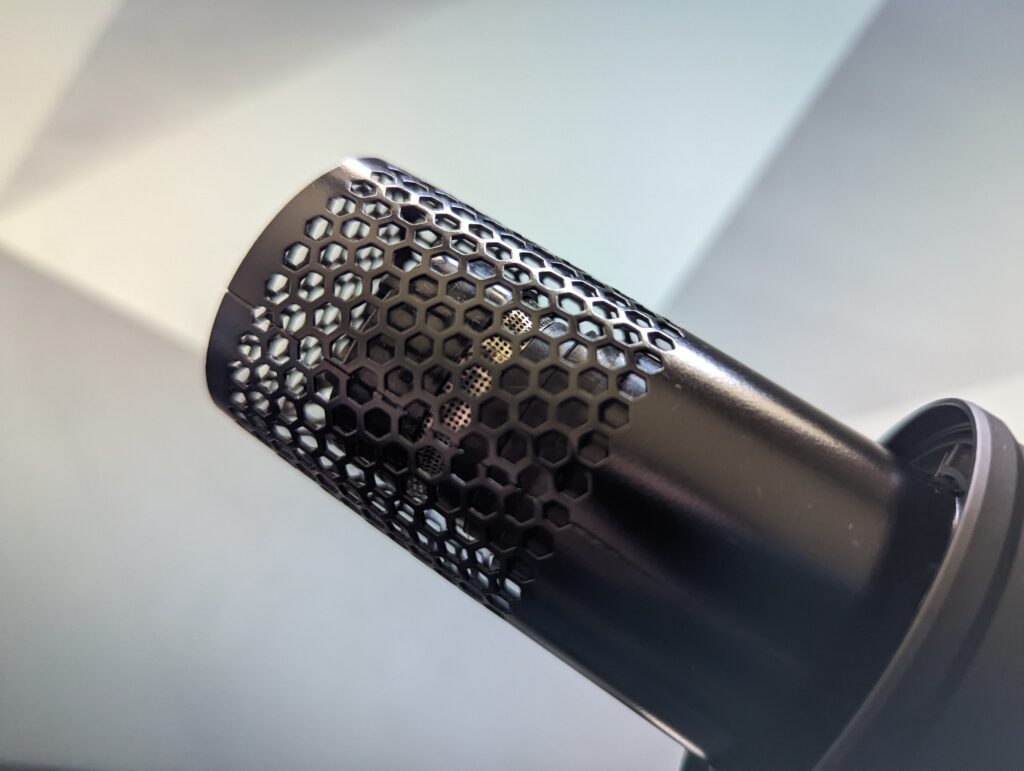
I really don’t have anything noteworthy to share for negatives when it comes to the build quality and feel of this mic… It’s a fully metal, well-built microphone and has a very straightforward design!
The only thing I could say is that the angle adjustment doesn’t stay put over time, but it’s so easily adjustable that it’s not really something to mark as a true negative or con with the mic.
Overall, going from a plastic microphone build over to the metal design of the K688, it’s high-end and feels like it will stand the test of time.
USB Type-C & XLR Connections
For now, I am only using the Type-C connection directly to a front USB 3.0 port to my PC. I have no need for specific audio adjustments using a mixer, I simply wanted a high-end mic to use with a boom arm and have more room for using my keyboard.
With the Type-C connection, it’s also compatible with PS4/PS5 but note that it is NOT compatible with Xbox. The focus here is obviously using it on PC but figured it’s worth mentioning in case folks planned on using it with multiple devices.
The Type-C cable that comes with is a Fifine branded cable and it’s 8.2 ft long so there is more than enough length to place your boom arm wherever you need it and still be able to have it connected.
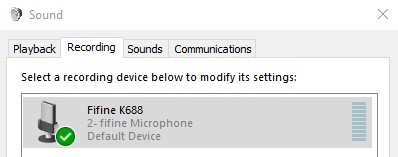
Plug-and-play – immediately able to be used without messing around with settings or other software.
This mic is plug-and-play – no need to really mess with different audio settings within Windows as the mic instantly gets recognized and can be used right away.
Sure, some sort of dedicated software would be a cool extra feature but there’s really no need when you can adjust things on the fly and use it immediately.
If/when the time comes when I have a specific use-case for using XLR then I’ll come back and update things here utilizing a mixer with it and how that works but for now, I’m enjoying it as my go-to high-quality choice for Discord and in-game communication.
Comparing The K688 To Other Mics
Since I did a review of the Fifine AM8 microphone a while back, I figured I could share direct comparisons of the AM8 and K688 for the use case and how different they sound altogether.
I’ll share a couple of shorter recordings from both mics so that you can quickly hear the quality difference between the AM8 and K688.
It’s also worth noting some of the different mics on the market that would be considered direct competition with the K688 to see how well it holds up since the K688 and AM8 are meant for different use cases.
K688 vs AM8
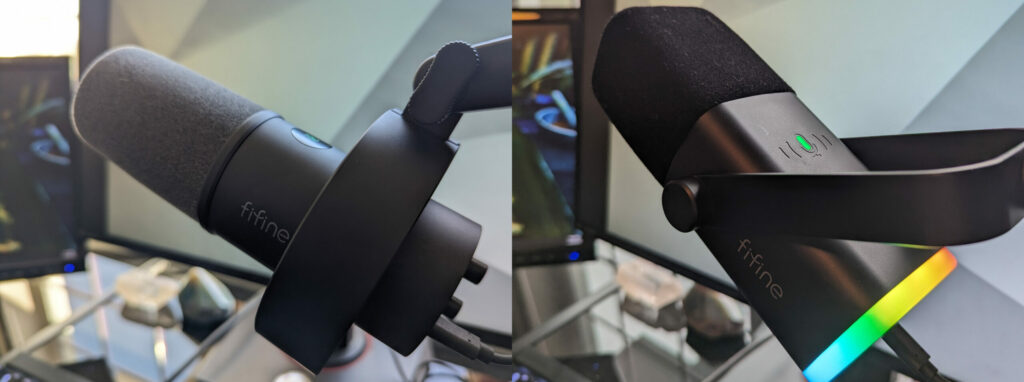
It makes sense to compare these two mics since I’ve had experience using both of them for a while now, and now have tried using the AM8 with the boom arm instead of the stand that comes with it.
Right off the bat, the K688 is easier to use and find the right angle with a boom arm since the design of the mic is meant only for use with a boom arm whereas the AM8 struggles to have a full range of motion since the cable ends up getting snagged by the metal arms of the mic.
There are some easy adjustments to make using the BM88 boom arm to compensate for both of these mics, but it’s worth sharing that you certainly get more “freedom of movement” with the K688.
If you want to know more about the AM8 then I’d suggest checking out the full review of the AM8 here on the site – but here are a couple of recording examples for direct sound comparisons with the K688 and AM8:
AM8 Sound Example:
K688 Sound Example:
The most noticeable difference between the AM8 and K688 when it comes to audio quality is the focus on the highs on the AM8, you can hear the difference in these recording examples of how the K688 has a better balance of highs/lows.
Specifically with the AM8, when it comes to “S” sounds, you can hear the level difference with the K688 and how it lessens the impact for different sounds.
Then there is also the shock mount that is used with the K688 – it makes a noticeable difference for stabilization and keeping random feedback from vibrations and/or movement from going through the microphone.
For the AM8, sure it has a good sound level but it doesn’t have the added bonus of a dedicated vibration/movement feedback solution.
Be sure to listen to the first recording I have towards the beginning of this review with the K688 – it goes over tap tests and different distances. I didn’t feel the need to record that same example here, just wanted to have something to compare for audio next to the AM8 example.
To sum up, when it comes to the K688 vs the AM8, the K688 makes more sense to get if you want to “maximize mic quality per dollar spent” and you already plan on using a boom arm right out of the gate.
You should go for the AM8 if you’re planning on spending less and want to get a boom arm down the road rather than starting out with one – that’s a point with the AM8 is that it comes with a microphone stand whereas the K688, you have to include the price of a boom arm with it.
Quality Comparisons To Other Mics

One of the “go-to” professional microphones on the market is the Shure SM7B. It’s a great-sounding, professional microphone used by many professionals whether it’s for vocal recordings for musicians or wanting the peak of audio sound for podcasting.
There are plenty of comparison examples shown comparing the raw sound and XLR with the K688 and the SM7B – I’d suggest checking out this video for a clear audio example, that link should be right at the timestamp for the sound tests between those two mics.
When you compare the K688 with some of the other popular, high-end mics on the market… the difference is so subtle to the point where it makes more sense to go with the K688 to save money.
This is especially true if you’re just starting out with overall content creation or want a crispy, high-quality voice recording when in VOIP or in-game communication – it’s available at a much lower cost and yet is so similar to a microphone that is in the $300+ range when it comes to audio.
And it’s not just the audio quality comparison – the overall build of the K688 is really nice made out of high-quality metal and overall just feels great!
Conclusion
All in all, Fifine did a fantastic job with the K688. It’s on par with some of the highest-quality professional microphones on the market when it comes to audio quality, yet it’s available for a much lower price point.
Although it doesn’t come with a stand, you’ll have to pair it with a boom arm right out of the gate, it shines in overall quality and feels amazing to use as a daily mic for any use case.
If you plan on using this with an XLR connection, I’ve noticed that you’ll also still need to have the USB-C plugged in to utilize the mic gain/mute function.
Other than that, there’s really nothing clear to point out when it comes to “cons” – Fifine didn’t miss here and I’m super happy with it.
Be sure to check out the other reviews over on Amazon as well – the proof is in the pudding and there are plenty of other reviews comparing this with all of the other professional mics as well!
So, are you picking up the K688?
How do you think it compares with other professional-level mics?
What else do you think Fifine could include with the K688?
Let me know in the comments below! 😀
Pros
- Super high-end studio quality
- Simple controls, easy to use
- Fully made out of metal
Cons
- Does not come with an XLR cable
- With XLR, still have to have USB-C plugged in with XLR in order to use mute/gain controls
- Does not come with any stand
Hey there! 👋 I’m Colton, founder of PC Builds On A Budget.
Whether you need help putting your PC together, finding a great pre-built rig, or want some help finding awesome peripherals – I’ve got you covered!
I share my experiences of anything and everything related to gaming PCs with you here. 👍

